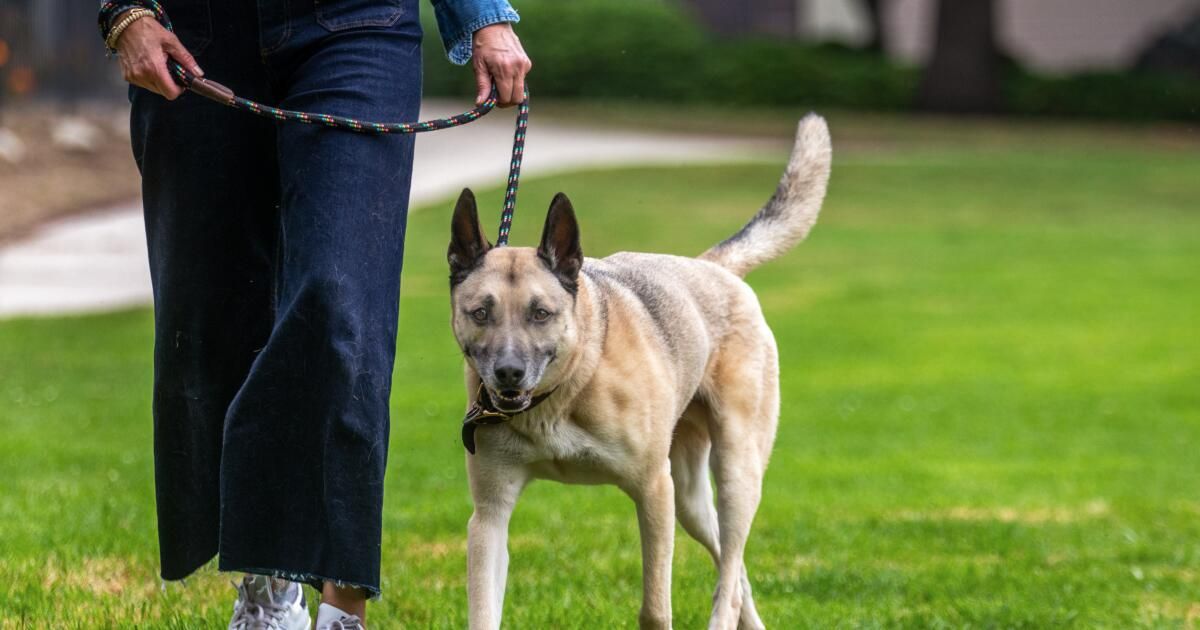Dog bites are generating record numbers of Californians to the emergency room. A recent study by the Department of Health Care Information and Access found that in 2022, the state recorded an all-time high of 48,596 Emergency visits for dog bites.an increase of 12% compared to the previous year.
Nearly half of American households (about 45%) have at least one dog. Many puppies were hastily adopted during the pandemic and then not trained or socialized properly, so they are not functioning well now. While these factors may be driving the increase in bites, most of these incidents can be prevented. Understanding dog body language, properly training your animals, and not rushing to pet other people's dogs could go a long way toward reducing the likelihood of violent canine encounters.
Ferocious attacks by aggressive dogs are atypical cases. Most bites occur because the animals are under stress and humans do not understand their signals. Although dogs are generally not dangerous, all dogs (whether $1,000 Labradoodles or stray shelter dogs) can bite if they are stressed enough. Of the 4.5 million dog bites reported in US every year, it is estimated 80% happens at home.which usually involves a dog and a human who have met before.
The human story is usually the same: the bite came out of nowhere. But there are almost always signs. We're just bad at reading them. Everyone knows to back away from a growl, but dogs often communicate their discomfort long before it reaches that point.
Dog aggression occurs on a staircase. Initial signs of discomfort may include licking your lips, looking away, or yawning. Dogs will then escalate a step toward behaviors such as stiffening, staring, or crouching with their tail tucked. When even the most conscientious dog owners fail to recognize the signs, then, seemingly out of nowhere, the dog reaches the top of the ladder and feels no choice but to bite that small child or overzealous guest. A dog that is poorly socialized or in pain will get worse much faster than a healthy, well-adjusted one.
Sometimes, however, there are no signs before a dog begins to attack and bite. That happens when the animal's attempts to communicate are repeatedly punished, something common in aversive training, which penalizes bad behavior with physical tools such as collars that provide electronic stimulation, spiked collars that dig into the skin, and choke chains that squeeze the neck. While not backed by scienceThis approach is still used in the unregulated dog training industry.
Aversive techniques seem to work, but that is misleading. Fear-based learning can push dogs to stop performing any behavior, good or bad, because they are afraid of making a mistake and risking pain. This closure occurs quickly and is easily mistaken for good behavior. But there has been no growth, only bullying and loss of trust, leaving a dog in a corner without a voice.
The consequences often arise through aggression, fear, anxiety, and biting that seem to come out of nowhere if you haven't noticed the signs. Fortunately, closed-off dogs are easy to recognize: They are evasive and disengaged, and appear rigid or guarded.
Effective techniques do not rely on physical punishment. Positive reinforcement training, the method supported by the American Veterinary Society of Animal BehaviorRewards dogs for what they do well, motivating good behavior through treats, toys, verbal praise, and other options.
While you can teach basic commands like “sit” and “stay” in one day, solving more complex behavior problems is a lifelong task. The improvements may be too subtle to notice, unlike the apparent quick fixes of aversive training. But Puppies that have proper training. They are better adapted throughout their lives.
And even good training is still only one-way communication through which dogs learn to listen to us. We must also listen to them. In addition to understanding the signs that trigger bites, it is advisable to remove a dog from a situation where he is showing signs of distress. Dogs need a safe space at home to escape to when they feel overwhelmed, especially in homes with young children.
Finally, we must establish and respect limits around petting. He doesn't feel obligated to let other people pet his dog. Let's also stop obsessing about petting other people's dogs as soon as we meet them, and teach our children the same. Even though social media trends advise us “pet all the dogs”, many barely tolerate strangers touching them. Dogs who want your attention make it known, approaching with wagging tails, soft eyes, and a loose, undulating body. If you are the one who has to initiate the interaction, a good rule of thumb is: don't do it.
We love our dogs. We are also responsible for them. We must respect all dogs as individuals with their own history, personality and triggers. Know your limits, meet them where they are and you won't give them a reason to send you to the ER.
Melonie San Pietro has a master's degree in canine science and is the owner of a small dog walking business in Washington, DC.












